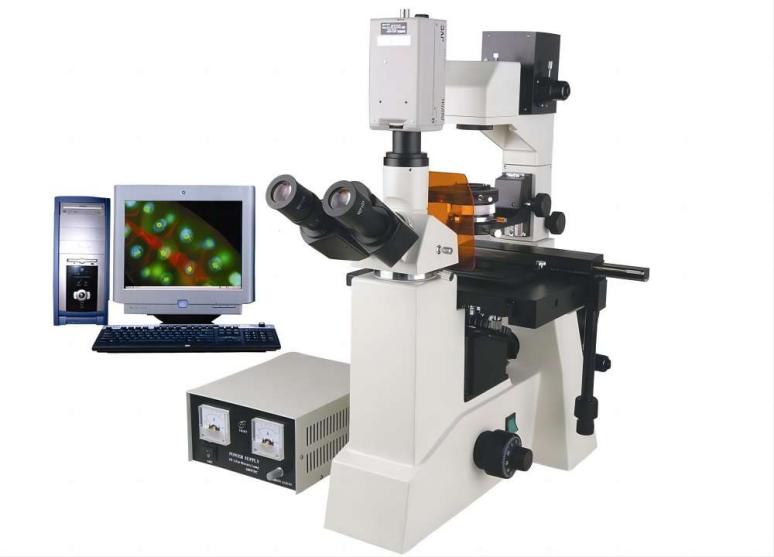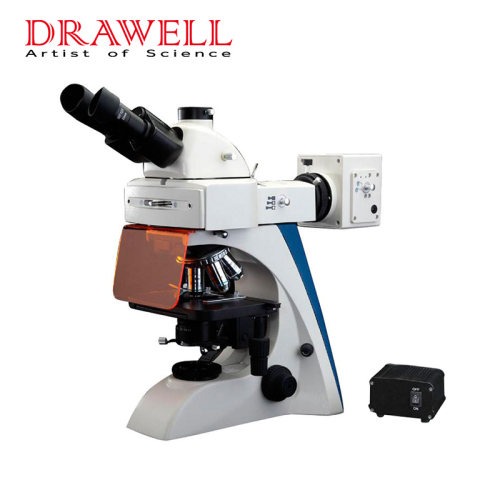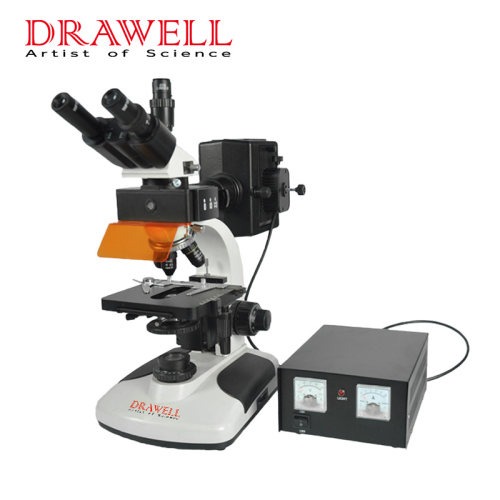The emission filter is a fundamental component in fluorescence microscopy that is responsible for separating and collecting the fluorescent signals released by tagged specimens. Fluorescence microscopy allows researchers to see individual molecules or structures within biological samples by stimulating them with one wavelength of light and then detecting the emitted fluorescence at a different wavelength. The emission filter is a necessary tool for distinguishing the fluorescence signal from the excitation light, allowing researchers to obtain clear and accurate images. In this article, we’ll focus on the topic of what is the purpose of an emission filter in the fluorescence microscope, delving into the significance of an emission filter in the fluorescence microscope.
Filtering Out Excitation Light through Emission Filter in the Fluorescence Microscope
The material is illuminated with a specific wavelength of light known as the excitation light during fluorescence microscopy. When the excitation light interacts with the fluorescently labeled molecules in the sample, they emit light at a longer wavelength, which is known as fluorescence. Some of the excitation light may, however, pass through the sample and reach the detector, thereby overwhelming the weaker fluorescence signal. The fundamental function of the emission filter is to block and filter out excitation light, enabling only fluorescence emission to reach the detector.

Enhancing Signal-to-Noise Ratio through Emission Filter in the Fluorescence Microscope
The emission filter improves the signal-to-noise ratio in fluorescence microscopy by blocking the excitation light. The signal-to-noise ratio compares the intensity of the desired fluorescence signal to the background noise, which includes any stray excitation light and any undesirable light sources. A high signal-to-noise ratio is essential for obtaining crisp and sharp images with maximum contrast since it helps researchers to successfully identify the weak fluorescence signal from background noise.
Selectively Transmitting Emission Wavelengths through Emission Filter in the Fluorescence Microscope
Fluorescent molecules emit light at different wavelengths depending on the fluorescent label employed. Different fluorophores emit light at different wavelengths due to their diverse emission spectra. The emission filter is intended to selectively transmit the fluorescence wavelengths emitted by the tagged molecules in the sample. This ensures that only the desired fluorescence signal is detected while blocking any unwanted light at different wavelengths.
Reduction of Background Noise through Emission Filter in the Fluorescence Microscope
Unwanted background noise in fluorescence microscopy, such as auto-fluorescence from the sample or stray light, can contribute to a decreased SNR. The emission filter effectively blocks these undesirable wavelengths, reducing background interference and improving fluorescence signal clarity. As a result, images are sharper and more accurate, making it simpler to differentiate designated structures or molecules from background noise.

Enhancing Sensitivity through Emission Filter in the Fluorescence Microscope
By efficiently transmitting the fluorescence emitted by the fluorophores and blocking unwanted signals, the emission filter increases the sensitivity of the detection system. It enables researchers to identify even weak fluorescence signals and more precisely visualize low-abundance compounds. Furthermore, increased SNR improves the capacity to precisely estimate fluorescence intensity, resulting in more trustworthy data processing.
Improving Image Quality and Specificity through Emission Filter in the Fluorescence Microscope
The fluorescent microscope captures high-quality images with outstanding specificity thanks to the careful selection of emission filters. The capacity of the microscope to distinguish between various fluorophores with overlapping excitation or emission spectra is referred to as specificity. Researchers can reliably differentiate distinct fluorescent labels in multi-color fluorescence microscopy by applying the appropriate emission filter, allowing them to observe multiple molecules or structures within the same material at the same time.
Compatibility with Fluorescent Labels through Emission Filter in the Fluorescence Microscope
To successfully capture the emission wavelengths of multiple fluorescent markers, different emission filters are required. To ensure compatibility and optimal performance, researchers must select emission filters that are compatible with the fluorophores being used. This ensures that the microscope is calibrated to detect the desired wavelengths, improving the overall efficiency and accuracy of fluorescence imaging.
Summary
The emission filter is a critical component in the fluorescence microscope that separates the weak fluorescence emission from the more intense excitation light, allowing researchers to accurately and effectively visualize and study specific molecules or structures within biological samples, making fluorescence microscopy an invaluable tool in various scientific disciplines ranging from cell biology and neuroscience to microbiology and beyond.

